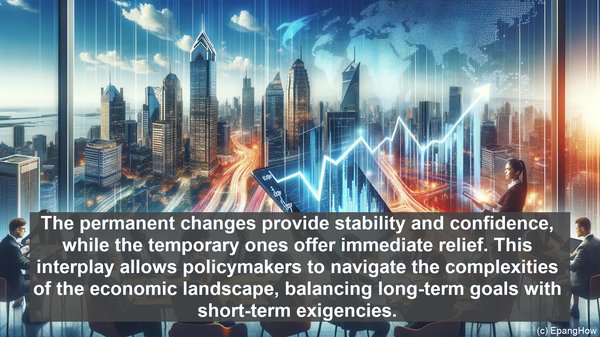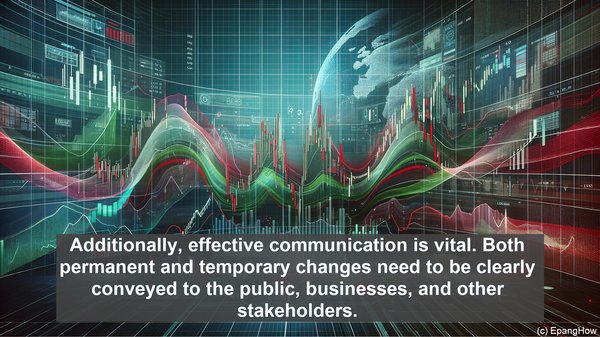Introduction: The Role of Tax Changes in Fiscal Policy
Welcome to our article on the intriguing world of fiscal policy. Tax changes are one of the primary tools in the hands of policymakers to influence the economy. They can be used to stimulate growth, control inflation, or address income inequality. However, not all tax changes have the same impact. Let’s explore the nuances of permanent and temporary tax changes.

Permanent Tax Changes: A Long-Term Impact
As the name suggests, permanent tax changes are alterations made to the tax system that endure over an extended period. They often involve modifying tax rates, brackets, or exemptions. The key characteristic of permanent changes is their lasting impact on the economy. They provide certainty to individuals and businesses, allowing for better long-term planning. For instance, a permanent tax cut can boost consumer spending, leading to increased business activity and job creation. Similarly, a permanent tax increase can provide a stable revenue stream for the government, enabling it to fund essential public services.
Temporary Tax Changes: Short-Term Adjustments
Temporary tax changes, on the other hand, are more transitory in nature. They are often implemented to address immediate economic concerns or respond to specific events. For example, during an economic downturn, a temporary tax cut can provide a quick stimulus, encouraging spending and investment. Similarly, in times of crisis, temporary tax measures can be employed to support affected industries or individuals. However, the impact of temporary changes is usually short-lived. Once the temporary period ends, the tax system reverts to its original state, and the economic dynamics may readjust accordingly.

The Importance of Timing and Communication
When it comes to tax changes, timing is crucial. Permanent changes, with their long-lasting effects, require careful consideration and planning. They often involve extensive discussions, debates, and legislative processes. Temporary changes, on the other hand, demand quick action, especially during times of urgency. Additionally, effective communication is vital. Both permanent and temporary changes need to be clearly conveyed to the public, businesses, and other stakeholders. This ensures transparency and allows for better anticipation and response from the affected parties.
The Interplay of Permanent and Temporary Changes
In practice, fiscal policy often involves a combination of permanent and temporary tax changes. For instance, during an economic downturn, a mix of permanent tax cuts and temporary measures may be employed. The permanent changes provide stability and confidence, while the temporary ones offer immediate relief. This interplay allows policymakers to navigate the complexities of the economic landscape, balancing long-term goals with short-term exigencies.
